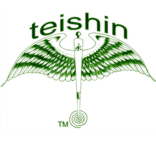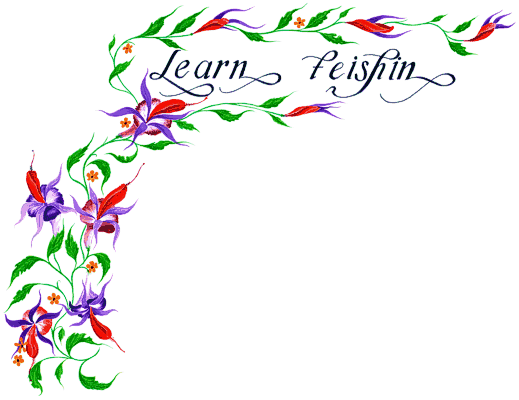Needleless
Acupuncture


Teishin...
The Lost Art
Almost from the start of a search for the origins of acupuncture, qigong, and other meridian based arts, it becomes clear that their roots are impossible to accurately trace. First, their progress was not accomplished as a single uniformly advancing front. Often records were kept on silk, which was perishable, and also there were objects made of stone or bamboo whose use was uncertain. We are able to find written evidence of these beginnings, that were recorded a little more than 2000 years ago. These written documents were sufficiently sophisticated that they are still studied in modern acupuncture schools.
It may come as a surprise that acupuncture was not invented with needles. Other than a few beach dwellers with fish bones and bamboo slivers, early healers were performing acupressure and bleeding techniques with pointed rocks, which in Chinese were called bian shi. Around 200 B.C., some pre-Christian goldsmiths started supplying the imperial physicians with gold needles, but pretty much everybody else was still using various forms of stone tools, with little more than refinement of the shape and sharpness. There was some use of bronze and iron, but primarily stones such as flint were still being used.
This trend continued until about 400 years ago, when steel needles were invented and puncturing the skin with needles became fashionable, (no doubt causing consternation among the previously secure ‘pointed rock’ doctors). Shortly after this time acupuncture fell into disrepute and for a time was basically illegal. Luckily it had already been exported to other countries, so it’s uses continued to be explored and advanced to it’s modern status.
The bian shi were the precursors of both acupuncture needles and the modern teishin The word teishin, (often written tei-shin )signifies a needle or probe that does not penetrate the skin; Modern teishins are often a work of art, made from gold, silver, or platinum, and sometimes combined with stones such as jade or lapis. There are also stainless steel models, which are spring loaded to allow variable pressure to be applied.
Not long after I began my studies in meridian therapies in the mid 1970’s with Dr. So at New England School of Acupuncture, I had a growing awareness that the majority of the western population was missing out on the miraculous benefits of point and meridian therapies because of an aversion to needles, often the result of forced surrender to injections during childhood. Dr. So, who is credited with bringing acupuncture to the U.S., primarily focused our training on the use of needles and moxa (heat applied with burning herbs), so I, as most of the general public was unaware that there are many non-needle methods for obtaining acupuncture like results.
When I was involved in busy clinical practice, I often forgot about how many people were not getting treated, but always that awareness resurfaced.
During my years of living in Hawaii, I had a friend who was a scrimshaw artist and was using fossilized mastodon tusk a beautiful blue, brown and cream colored fossil material, from a species which became extinct about 10,000 years ago. Scrimshaw is a very exacting art in which delicate drawings of ships, whales, and other maritime scenes are scratched on materials such as walrus tusk or bone , then rubbed with ink to produce the final image. This art was practiced by sailors to while away their long hours at sea.
At this time I was teaching a course in auriculotherapy (a specialized type of acupuncture using only points in the ear) and I was so taken by the beauty of these materials that we began to discuss the idea of making pressure probes for the ear points, which were difficult to stimulate in a precise manner with only fingers, and required exacting precision to needle. These fossilized materials were particularly desirable for making probes because of their hardness and beauty. We decided to make one end pointed to give focused pressure and the other end rounded for more gentle massage techniques. This worked very well for the ear points, since these potent points were located in the thin skin covering the cartilage, making them readily accessible for stimulation. Somehow the idea of treating acupuncture points with a tool made from a pre-historic animal tusk held a certain romance. Also the effectiveness of the auricular points is so respected, that some acupuncturists use only the ear to treat physical and mental imbalances.
During my studies with Peter Frazier a master acupuncturist at Acupuncture College of Australia, in Melbourne, I was taught the command points for the 8 Extraordinary Meridians,a set of unique, and very useful energy flow patterns. My interest in these treatments grew because of their effectiveness for common problems such as digestive, emotional, and nervous system disorders. These energy patterns are activated by points on the arms and legs, making them readily accessible for self-treatment. More importantly for me, the points are located very superficially, which I would later realize. made them convenient for teishin stimulation, These meridian flows were also very integral to the practice of qigong and were believed by some to have been discovered by qigong practitioners.
At this time, I became more involved clinically with needle, moxa, and electo-acupuncture and gave no more attention to teishin treatment
Several years later after noticing spring-loaded teishins in a catalogue, I began to renew my interest in focused pressure devices and with a jeweler friend, Reinhard Zoels, designed some teishins from gold, silver, and various colors of jade, They were such beautiful objects that we then designed a necklace with a quick release clasp that allowed them to be worn as jewelry, while being quickly available for use.
By this time, I had been involved with meridian and point therapies for over 30 years, and had watched acupuncture grow from the alleys of Chinatown to the respected professional and legal status that it has today. It had been my good fortune to work in a modern western medical clinic where I could observe the effectiveness of a blend of eastern and western techniques. I had also studied in other acupuncture schools and with other teachers who taught unique styles of point therapies. and I became increasingly fascinated by self treatment systems such as qigong and teishin therapy. This deepened for me when I was able to restore my eyesight after several years of wearing glasses for both near and far vision. I first progressed to using only reading glasses and then to complete freedom from corrective lenses. No longer having a restricted driving license was especially satisfying, since I was now in my mid 60’s.
It is clear that acupuncture needles offer some unique advantages, such as deeper stimulation, the possibility of threading treatments, and simultaneous multi-point stimulation. Clinically it is highly efficient to be able to insert needles and leave them in place, while treating other patients. But it is also clear that one can apply massage with varying amounts of pressure using teishin type tools, which of course can not be done with a needle. More importantly, being able to make meridian and point therapies available to those who would probably never receive treatments with needles, is an advantage to both patient and therapist. Additionally, teishin stimulation readily lends itself to follow-up home treatment by the patient, as well as use by massage practitioners.
One of the specialized areas suitable for teishin treatment is cosmetic acupuncture, sometimes called the ‘acupuncture face lift’. These treatments, which have a long history in the orient, have now begun to gain a well deserved popularity in the west. One has only to stimulate the points on one side of the face, and then compare it’s look and feel to the non-treated side, to know unequivocally the powerful effects that can be obtained by this simple treatment. Even more importantly, with a teishin, self treatment becomes a reality, with times and frequencies scheduled according to personal convenience and applied 2 or 3 times a week quickly produces visible results.
Due to it’s convenience and ease of application, the teishin art can be a spectacular addition to any yoga, qigong, martial arts, or healing practice, whether applied to oneself or used to help others. As it emerges once again from the shadows of it’s ancient past, it’s potential use in today’s highly diversified kit of therapy tools seems assured.
